You’ve likely seen some epic photos circulating online of a statuesque Rottweiler posing majestically alongside a noble-looking German Shepherd.
Their shiny black and tan coats complement each other perfectly as they stand stalwart, side by side.
It’s an impressive image and one that undoubtedly captures the imagination of many dog lovers considering adding one or both of these popular breeds to their family.
But before you run out and adopt a Rottie and a Shepherd on looks alone, it’s important to look past the Instagram filters and consider what it takes to raise two large, powerful breeds with distinct personalities and needs under one roof.
Rottweilers and German Shepherds have a lot in common historically and temperamentally.
Both descend from ancient Roman drover dogs used to herd cattle over long distances. Both were later utilized by police and military forces for their intelligence, trainability, loyalty, and protectiveness.
These shared attributes can facilitate an unbreakable canine bond and successful cohabitation, given the right environment and ownership. But they can also create a volatile situation if not properly managed.
Like any relationship between two strong personalities, a Rottweiler and German Shepherd duo requires understanding, patience, and work.
In this article, we’ll break down the key considerations, challenges, and best practices for keeping everyone safe, happy, and sane if you choose to make the iconic Rottweiler-Shepherd duo part of your family.
Breed Histories and Characteristics of Rottweilers and German Shepherds
To understand what it takes to harmoniously merge Rottweilers and German Shepherds, it’s helpful to first take a close look at each breed’s history and innate characteristics.
There’s a reason these two make such a striking pair in photos, and it stems from their shared genetic roots.
The Rottweiler
With origins dating back to ancient Rome, Rottweilers are one of the oldest working dog breeds.
Their name derives from the small town of Rottweil, Germany, where they were used as cattle dogs to drive livestock to market and pull carts loaded with butchered meat to town.
This demanding job required intelligence, power, and an independent nature to control unpredictable cattle.
The breed’s innate protective instincts were also invaluable in guarding the butcher’s money pouches from thieves.
Today, Rottweilers maintain these ingrained traits. They are self-assured, stalwart, and discerning.
Rottweilers bond intensely with their people while remaining aloof and wary of strangers. Their natural protectiveness and territoriality mean they require extensive socialization from an early age.
With the right handling, Rottweilers are calm, confident, and courageous companions. But their considerable size and strength demand an experienced owner with a natural air of authority.
The German Shepherd
German Shepherds have a more recent origin, developed in Germany in the late 1800s primarily for sheep herding.
Like the Rottweiler, the breed required intelligence, athleticism, and independence to work flocks all day over challenging terrain.
German Shepherds proved so adept at their job, they were soon recruited for military and police applications.
They continue to excel as service dogs today, prized for their versatility, trainability, and eagerness to please.
The typical German Shepherd is both loyal and aloof, bonding firmly with their immediate family while remaining reserved and protective toward outsiders. They have a natural watchfulness that makes them excellent guardians.
Smart and energetic, German Shepherds thrive when given a job to do. Without sufficient physical and mental exercise, they are prone to destructive or neurotic behaviors.
Like Rottweilers, German Shepherds need extensive socialization, firm leadership, and activity to be stable companions.
Shared Traits and Temperament
It’s easy to see the similarities between these two esteemed breeds. Both Rottweilers and German Shepherds are:
- Large, powerful dogs bred for working roles requiring independence, intelligence, and protectiveness
- Devoted to their families while remaining wary of strangers
- Natural guardians that are territorial and possessive by nature
- Not recommended for novice dog owners, as they require experienced handling to behave appropriately
- Prone to destructive or aggressive behavior without proper training and socialization
- In need of regular activity, both mental and physical, to remain happy and adjusted
These shared attributes are part of what makes photographs of the two breeds together so compelling. They complement each other beautifully when properly socialized and trained.
But the same qualities that fuel their visual appeal can also create discord in the home if not respectfully managed.
Allowing a Rottweiler and German Shepherd’s protective tendencies and willingness to go unchecked is a recipe for trouble.
Keeping the Peace: Preparing Your Home
They say good fences make good neighbors. The same can be said for Rottweilers and German Shepherds sharing space.
While proper socialization and training allow most dogs to coexist peacefully, it’s risky to ignore the territorial leanings of Rottweilers and German Shepherds. Having an environment set up to avoid disputes is your first line of defense.
Inside the Home
- Provide ample personal space. Ideally, each dog should have their own bed in a separate area of the house.
- Feed in separate locations to prevent food guarding.
- Manage access to high-value toys and treats to prevent guarding. Provide multiples or take items away after playtime.
- Arrange furniture to create clear paths and visibility so surprise encounters are limited.
- Provide baby gates as needed to allow the dogs to choose whether to interact or be alone.
- Ensure your home has sufficient sound insulation so noises from outside don’t overly arouse the dogs.
In the Yard
- A 6-foot privacy fence prevents escapes and protects against outside disturbances that can trigger guarding behavior.
- Planting hedges or trees around the perimeter further discourages social encounters at the fence line.
- Install a dog door leading to a securely fenced dog run so each dog can choose to be outside alone if desired.
- Provide multiple water bowls and shaded rest areas to prevent conflicts.
- Position dog houses or rest spots at opposite ends of the yard.
- Use sturdy stakes and cable runs to safely tether dogs on opposite sides of the yard during supervised time outside.
With Careful Introductions
- Introduce the dogs in neutral territory like a park before bringing the new dog home.
- Bring the new dog home when the current dog is in a separate room or outside to allow them to adjust to the new smells first.
- Keep initial interactions positive and as short as possible. Don’t force contact.
- Feed and walk the dogs separately at first to avoid stress.
- Allow the dogs to set the pace for increasing contact. Let their comfort level guide you.
- Provide places for each dog to retreat until they are fully acclimated.
- Never leave the dogs unsupervised during the introductory period.
Prevention Is Key
While fate can never be fully controlled, setting up the physical environment to avoid clashes based on natural breed tendencies is the best way to prevent trouble down the road.
No amount of training can wholly override instinct. Management through smart spatial planning is the first step toward safety and happiness for all.
Harmony Through Training
Along with intelligent home design, proper training, and socialization are essential for a Rottweiler and German Shepherd to coexist amicably.
Both breeds are whip-smart and highly trainable in the right hands. But they require firm guidance from a leader they respect to overcome ingrained tendencies toward territorial behavior.
Here are some must-dos for getting started on the right paw:
Prioritize Socialization
- Expose each dog to a wide variety of people, places, animals, sights, and sounds starting as a young puppy.
- Ensure all experiences are controlled and positive to build confidence.
- Socialization is ongoing. Dogs should continually encounter new things throughout their lives.
Stress Obedience
- Teach and reinforce basic cues until they are rock solid. A reliable down-stay is particularly valuable.
- Obedience helps dogs look to you for direction when unsure how to react.
- Leash walking skills are critical. Pulling often signals arousal and can trigger overprotection.
Use Advanced Commands
- Cues like “Look”, “Leave it” and “Back up” build impulse control.
- Giving a dog direction preempts problems and reinforces you’re in charge.
Train Separately First
- Each dog has unique strengths and challenges. Tailor training accordingly.
- One-on-one training strengthens your bond with each dog.
- As skills improve, you can incorporate group training sessions.
Keep Training Fun!
- Incorporate play, praise, and rewards to hold a Rottweiler or German Shepherd’s interest and build trust.
- End sessions on a positive note to keep dogs engaged and progressing.
Patience Is Virtue
- Rottweilers and German Shepherds can be stubborn. Keep training sessions short and upbeat.
- Be firm but fair. Never get angry or lash out physically. That damages the human-canine bond.
Hire a Pro If Needed
- An experienced trainer can identify issues early and develop a training plan suited to each dog.
- Board and training programs are ideal for addressing behavioral problems or providing specialized training.
Consistency Is Key
All members of the household must reinforce training. Confusing or inappropriate handling can undermine progress.
With age-appropriate socialization, clear structure through training, and leadership from you, even Rottweilers and German Shepherds with dominant tendencies can reside together congenially.
Careful Matching for Success
While general preparation and training are essential, each individual Rottweiler and German Shepherd’s personality and temperament must also be taken into account for maximum success in sharing a home.
Temperament Testing Responsible breeders temperament test litters to determine suitability for various types of homes. Temperament is influenced by both genetics and early experiences.
Observation from an early age and across situations gives the most complete picture of a puppy or adult dog’s disposition. No test is 100% predictive, but temperament analysis allows educated matching.
Dominance
Two high-dominance dogs are likely to compete for control, leading to conflicts. Instead:
- Pair a dominant dog with a more submissive partner.
- Match two dogs with middle-of-the-road temperaments.
- Avoid combining a highly dominant dog with a very submissive/fearful one.
Sex
- Opposite-sex pairings often work better than same-sex.
- Two males are more prone to friction. Consider a female-male combo.
Size
- A significant size disparity can lead to bullying if personalities don’t mesh.
- Match dogs of comparable size/strength whenever possible.
Activity Level
- A laid-back dog may become stressed and defensive around a substantially more energetic dog.
- Select dogs with similar activity needs.
Personalities
- No amount of temperament testing is foolproof. Two dogs simply may not like each other.
- Be objective. Don’t force a poor match because you’ve fallen for a particular dog.
Take your time finding the right pairing. Rottweilers and German Shepherds each demand significant commitment. Be sure you’re ready for two dogs with intense needs before jumping in.
Proper Leadership Is Essential
At the end of the day, whether or not a Rottweiler and a German Shepherd coexist successfully comes down to you.
Both breeds are strong-willed and protective by nature. Without leadership they respect, this can become problematic.
Here are some key ways to provide the guidance Rottweilers and German Shepherds require:
Project Calm Assertiveness
- Behave confidently. Exude strength without needing to be harsh or physical.
- Respond rationally and consistently, even when stressed. Dogs sense emotional reactivity.
Provide Structure
- Set clear rules and routines. Dogs relax when they understand boundaries.
- Politely but firmly redirect inappropriate behavior. Don’t respond emotionally.
- Use control equipment properly like leashes, baby gates crates, or kennels to prevent problems.
Meet Emotional Needs
- Ensure each dog gets one-on-one attention and playtime with you regularly.
- Dispense treats and toys equitably to avoid jealousy.
- Consider their different personalities and adapt accordingly when interacting.
Give Them Jobs
- Provide plenty of physical and mental stimulation. Bored dogs become fractious.
- Give each dog “work” to do like training sessions, food puzzles, and fetch.
Be the Role Model
- Your calm, assertive energy sets the tone for your home.
- If you are relaxed and exude leadership, your dogs will be too.
Seek Expert Guidance
- Trainers can troubleshoot issues, demonstrate proper handling techniques, and help you better understand canine behavior.
- Behaviorists can address more significant aggression, anxiety, and fearfulness.
Rottweilers and German Shepherds look to their person for assurance and instruction. Providing consistent leadership curbs undesirable behaviors and facilitates harmony between the breeds.
The Perfect Pairing? Maybe!
A striking photograph of a proud Rottweiler and a noble German Shepherd standing together implies more than just good looks.
It represents the potential for an unbreakable canine bond founded on mutual understanding and respect.
While the vision makes for great Instagram posts, the reality behind that glossy image means meeting considerable needs and overcoming breed tendencies that originate deep in their shared history.
Raising a Rottweiler and German Shepherd under the same roof can be intensely rewarding. It can also be tumultuous if you are not fully prepared for the responsibility.
If you have the time, patience, and experience to properly train and lead these breeds, share plenty of living space, and match temperaments thoughtfully, a Rottweiler and German Shepherd have an excellent chance of becoming the perfect pairing after all.
Conclusion:
Rottweilers and German Shepherds share similar histories as working farm and protection dogs, and they have comparable temperaments – they can be loyal yet wary, energetic yet composed, and territorial but even-tempered with proper training and socialization.
These innate shared traits mean that, in the right home environment and with an experienced dog owner who can provide proper training, leadership, and individualized attention, the two breeds can potentially co-exist wonderfully.
However, their considerable size, protective instincts, and need for activity also mean that much preparation and careful management are required.
Factors such as providing ample space, staged introductions, extensive socialization and obedience training, and avoiding triggers like food guarding are key to success.
Perhaps most importantly, the owner must project calm-assertiveness, offer structure, dispense attention fairly, and serve as a confident leader who both breeds respect.
With understanding and hard work, a Rottweiler and German Shepherd duo can form an incredible bond and live in harmony, their similar histories and temperaments serving to complement one another beautifully.
But much consideration and preparation is required first to help this powerful and willful pair overcome their natural inclination toward territorial behavior.
If properly nurtured and managed, they can indeed become the perfect pairing that their striking appearance implies.
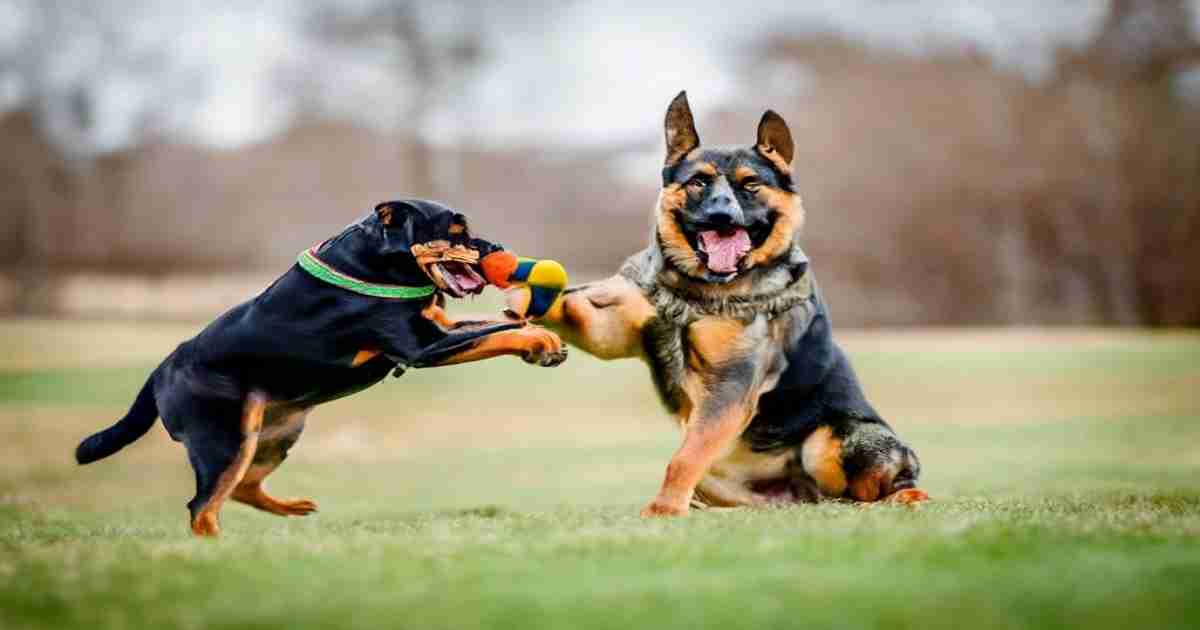

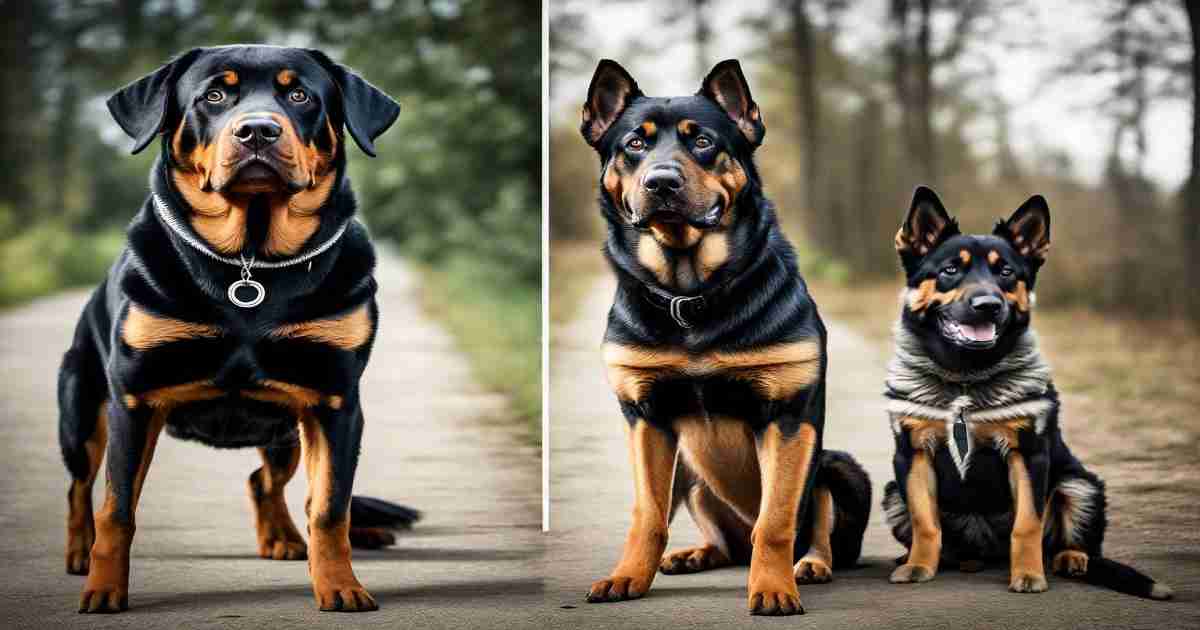
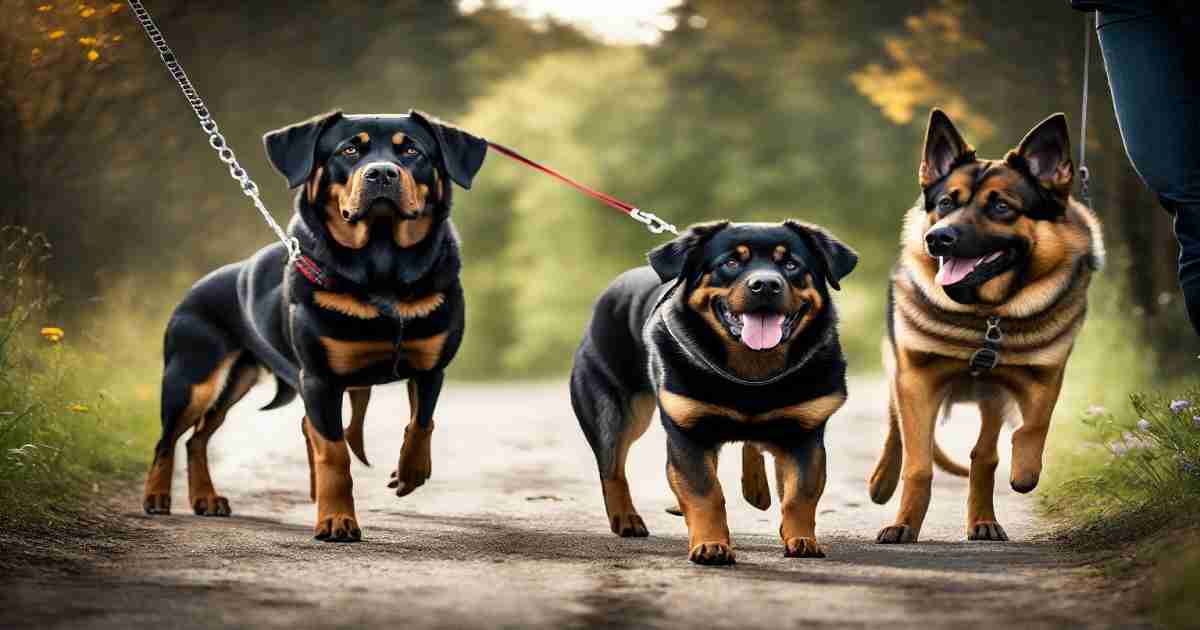
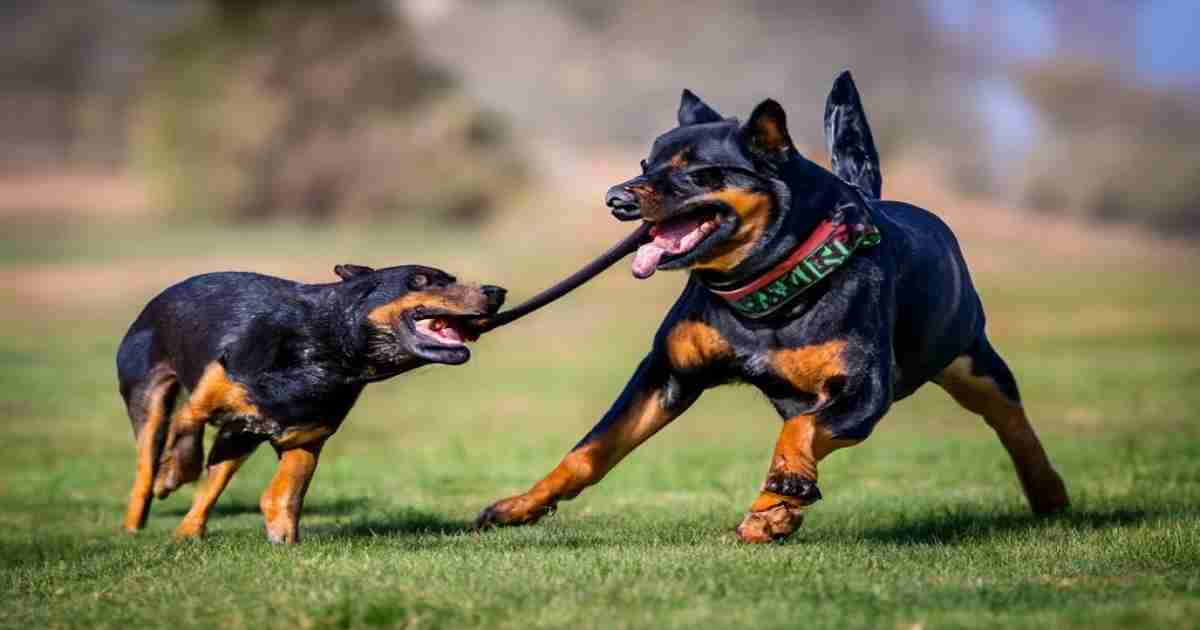
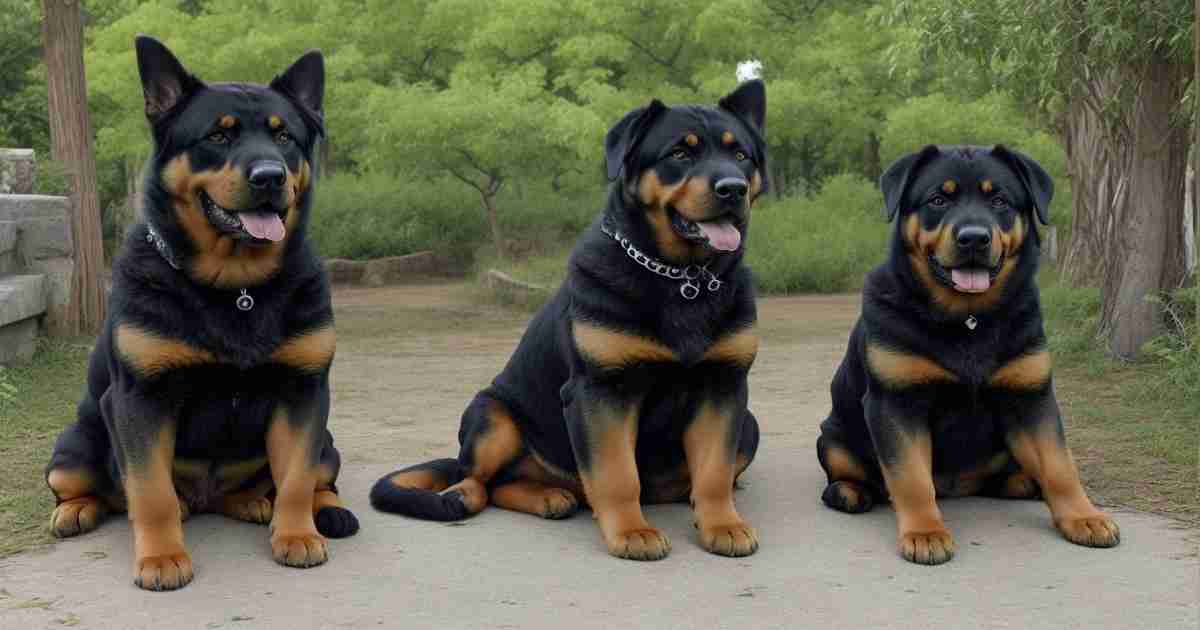
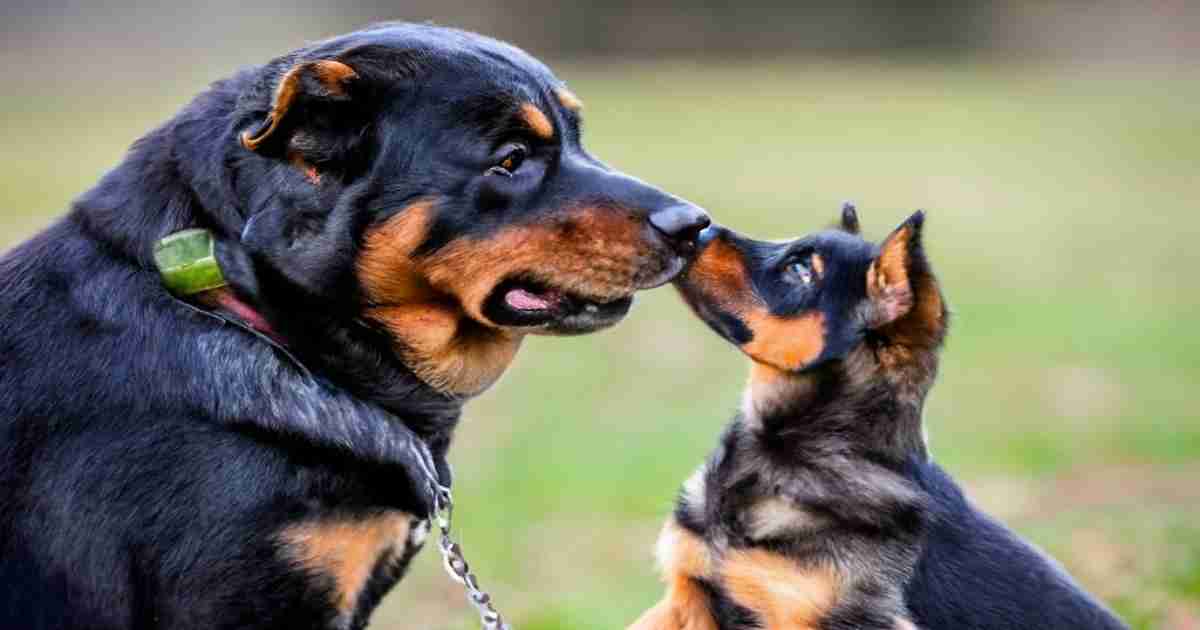



1 thought on “Rottweilers and German Shepherds: The Good, The Bad, and Making it Work”